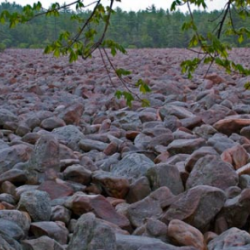Source Institutions
Source Institutions
Add to list Go to activity
Activity link broken? See if it's at the internet archive

In this activity, learners review and discuss weathering, erosion and mass wasting, to gain a stronger understanding of how Hickory Run’s Boulder Field was formed after the Laurentide Continental Glacier receded. Using edible materials, learners model and demonstrate the geological processes that formed this unique feature.
- 4 to 24 hours
- 45 to 60 minutes
- $5 - $10 per group of students
- Ages 11 - 14
- Activity, Experiment/Lab Activity, Lesson/Lesson Plan, Model
- English
Quick Guide
Materials List (per group of students)
- Shallow baking pan
- Gelatin
- Decorating icing tubes with piping tips
- Paper plates
- Plastic coffee stirrers (must be cylindrical stirrers)
- Roll of paper towels
Subjects
-
Earth and Space Science
-
Earth Processes
- Geochemical Cycles
- Weather and Climate
-
Earth Structure
- Rocks and Minerals
- Oceans and Water
-
Earth Processes
-
Mathematics
- Geometry
-
Physical Sciences
-
Motion and Forces
- Gravity
-
States of Matter
- Solids
- Liquids
- Changes of Phase
-
Motion and Forces
-
The Nature of Science
-
The Scientific Process
- Conducting Investigations
-
The Scientific Process
Informal Categories
- Food and Cooking
- Nature and Environment
Audience
To use this activity, learners need to:
- see
- touch
Learning styles supported:
- Involves hands-on or lab activities
Other
Includes alignment to state and/or national standards:
This resource is part of:
Access Rights:
- Free access
By:
- Education, Science Friday
Rights:
- All rights reserved, Science Friday, 2010
